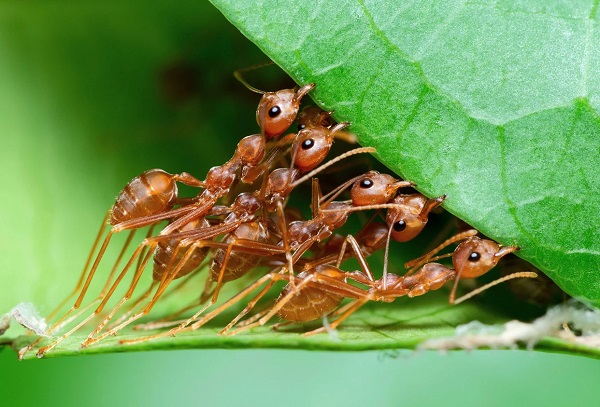
Ants are eusocial, or better yet, social insects from the Formicidae family. More than 13,800 of an evaluated total of 22,000 species have been classified. They are easily identified by their geniculate (elbowed) antennae and the irregular node-like structure that forms their skinny waists.
Identifying Ants
Ant identification can be challenging. Proper labels are important as food preferences, nesting sites, and other habits differ. These factors impact the most adequate methods for controlling them.
The Biology of Ants
Ants live in colonies and are diverged into different castes: workers, males and queens. Different castes have other responsibilities in the nest.
Workers are hygienic, wingless females. Some ants differ in size and are split into major (large) and minor (small) workers. The workers take care of the work in the nest, including expanding the nest, food gathering, caring for the eggs and larvae, and guarding the nest.
The reproductive members of the colony are the males and queens. Males are commonly the same size or larger than the workers. Queens are the largest members of the colony, often two to three times larger than workers.
Damages Caused by Ants
Damage from ants varies. Most are predominantly a nuisance, causing little actual damage, although they can be annoying and even unsettling when found in your home.
Some species can infest food. Others, like carpenter ants, can weaken wood in structures. While not common, at least one species, Pharaoh ant, has been known to share some diseases, like Salmonella.
Some ants nest in lawns. Fortunately, they do not feed on or injure grass but their presence can be bothersome. Cornfield ants nest in lawns where the grass is thinning or has become bare, creating small mounds. Field ants can nest in areas of the lawn that are growing well, creating mounds up to a foot in size. These large, high mounds can interfere with lawnmowers.
How to Control Ants
The first step in ant control is to recognise them. The most effective way to control ants is to put insecticide into the nest and kill the queen(s). This may be done with a direct treatment or by using bait.
Interesting Facts About Ants
1. Ants Can Lift 10-50 Times Their Body Weight
Because ants are so small, their muscles are thicker relative to their body mass than in bigger animals. This allows ants to carry objects much heavier and bigger than them. To put it into perspective, if humans could lift 10 times their weight, a 200-pound man could lift a small car above his head.
2. Ants Don’t Have Ears
Ants hear by feeling vibrations in the ground rather than using auditory canals. They use their antennae and the hairs on their body to feel around while foraging for food. Also, they have unique sensors on their feet and their knees that help them analyse signals from their surroundings.
3. Ants Have Distinctive Jobs
Ants are very social insects, and they divide jobs among different types of ants in each colony. The queen or queens have only one job – to lay eggs. All other female ants are workers; they feed the larvae, take out the colony’s trash, forage for food and supplies, or defend the nest. Male ants’ only job is to mate with the queen.
4. Most Ants Are Homeless
Not all ant species build nests. A mob of about 200 species known as army ants have two phases of their life: nomad and stationary. During the colony’s nomad phase, the ants travel all day, attacking other colonies and insects they encounter for food. While at night, they build a momentary nest and keep moving the next morning. The only time they stop travelling is during the dormant phase when the queen lays eggs and the colony waits for them to hatch. During this time, the worker ants make a nest out of their bodies to protect the queen, the food, and the eggs.
5. Ants Are Almost Everywhere on Earth
Ants are found on every continent on Earth except Antarctica. A few islands such as Greenland do not have any native ant species, but individual ants have been brought in through human travel. The vast distribution of ants is rivalled only by that of humans.



